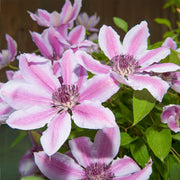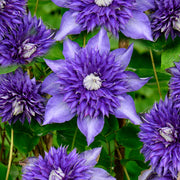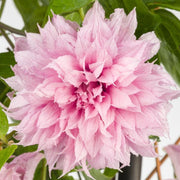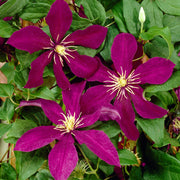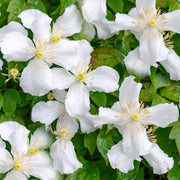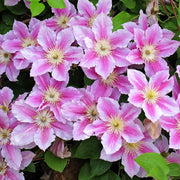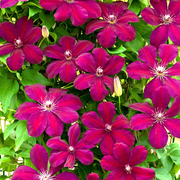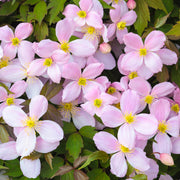Product description
Clematis ‘Westerplatte’ is a show-stopping perennial climber with deciduous mid-green leaves and exquisite, large, deep maroon-red flowers. It will begin to bloom until early summer through until autumn, and sometimes with a second flush of flowers in late summer. The plant is deciduous and so will lose its leaves over the winter months and can be pruned back in early spring ready for fresh new foliage and flowers.
Growing to an ultimate height of 1.5-2.5m and an ultimate spread of 0.5-1m, Clematis ‘Westerplatte’ is perfect for walls, trellises and pergolas. It also looks marvellous combined with another climber, and the deep red flowers with just a flash of purple are sure to give your garden a spectacular flower show.
Please Note: When purchasing plants please consider that each live item is unique and may therefore differ from the images shown, which are for illustration purposes only - The plant will be supplied in a growers pot. Depending on season, some plants may be pruned back to encourage growth and deciduous plants may arrive without leaves.
Plant specs, care guide & tips
Key features
Specifications
When to plant
| Jan | Feb | Mar | Apr | May | Jun | Jul | Aug | Sep | Oct | Nov | Dec |
|---|---|---|---|---|---|---|---|---|---|---|---|
Planting and period of interest times are general guidelines and may vary based on your location and conditions. For best results, consult local gardening resources.
Instructions
Top Tip
Clematis are long-living plants that don’t like to be transplanted, so choose your spot carefully and don’t move them unnecessarily.
How to Water
Water regularly throughout the first few growing seasons to keep the soil evenly moist but not saturated. Once established, clematis is relatively drought tolerant and only needs to be watered during particularly dry spells.
How to Plant
Clematis flowers best when planted in full sun or light shade in fertile, moist but well-draining soil. Prepare the soil by weeding the area thoroughly and adding plenty of well-rotted organic matter. Dig a generous hole and position the plant so the top of the root ball is around 5cm below soil level. Backfill the hole with soil and compost, firm down gently, and water in well.






